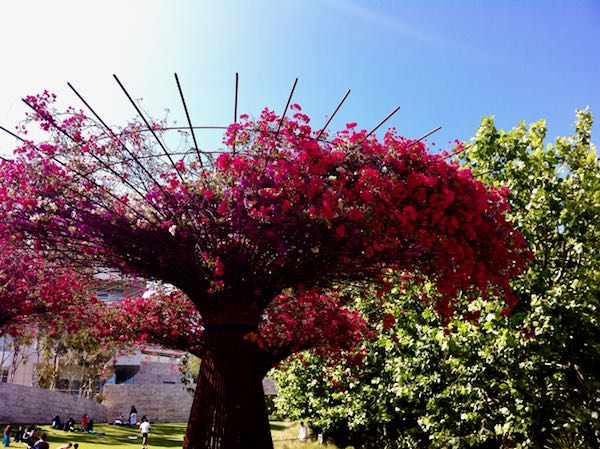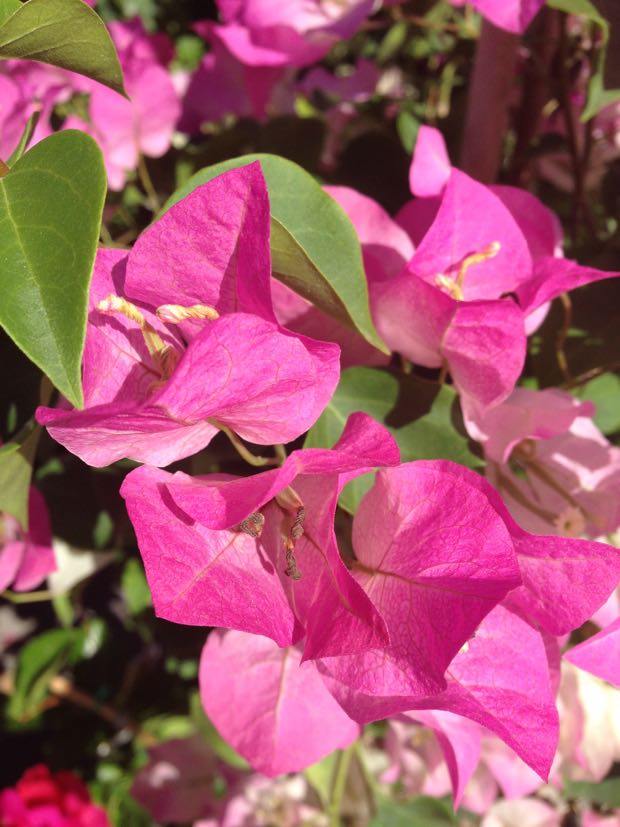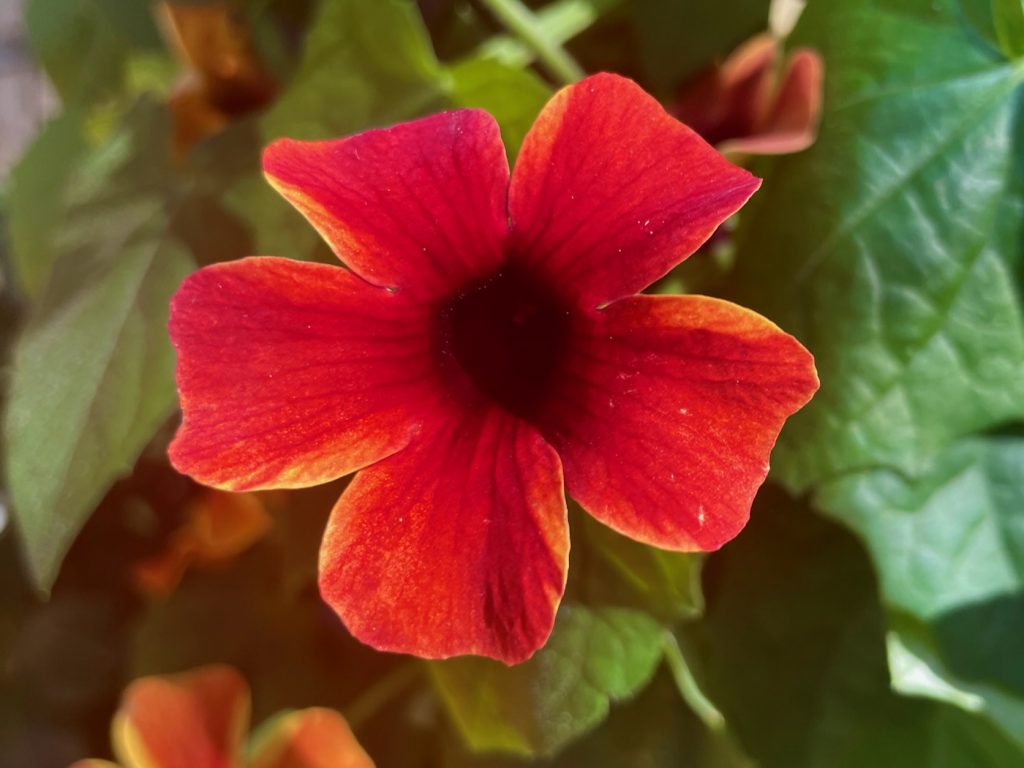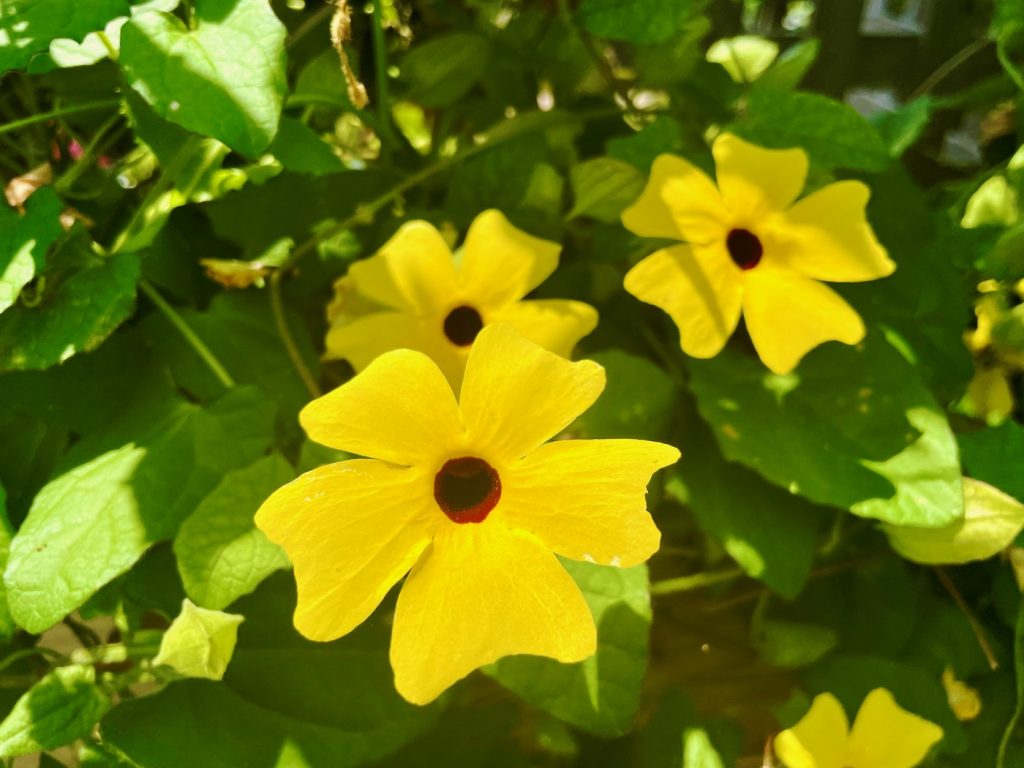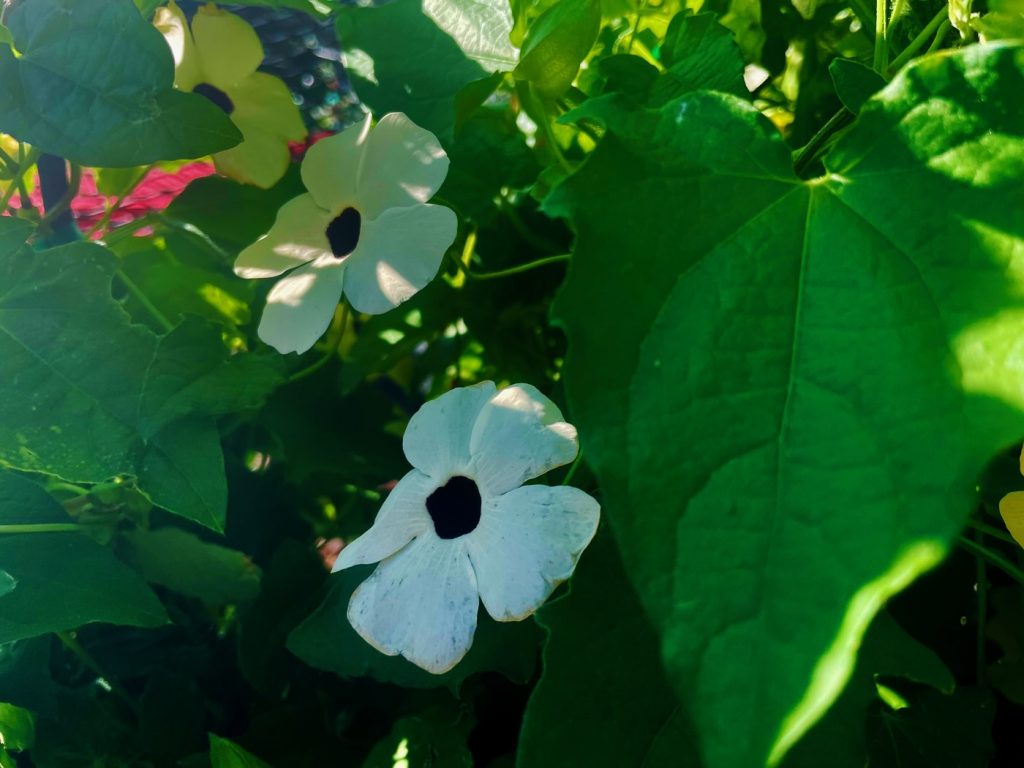Bougainvillea is an evergreen climber that blooms from summer to autumn. They also call it Buganvilla, Bugambillia, or Bougenville, and it can grow between 3′ to 40′. They are relatively pest-free but have spikes and thorns.
It grows well outside in milder climates, in colder climates, it can grow in a greenhouse or in the house as a potted plant. Bougainvillea is native to Eastern South America, Brazil, Peru, and Argentina. It is part of the Nyctaginaceae family of plants.
Bougainvillea is deciduous in dryer climates and evergreen in rainy climates. The flowers are very small and white but what is attractive is the colorful bracts that surround the tiny flowers, and the leaves are simply ovate and alternate.
Discovery and history of Bougainvillea:
Bougainvillea was first published by Philibert Commerçon (1727-1773) a French naturalist who among other things accompanied Louis Antoine de Bougainville on his voyage of circumnavigation during 1766-69. He created a botanical garden in his home city of Châtillon-les-Dombes. Later he moved to Paris and joined Bougainville on his voyage.
He traveled with his partner and nurse and botanist, Jeanne Baré who had to disguise herself as a man since women were not allowed on the voyage. In fact, it is believed that this plant was first observed by his partner. She is also known to be the first woman to circumnavigate the globe. On their return, he remained in Mauritius where he also died at age 45.

However, Bougainvillea was published twenty years later by Antoine Laurent de Jussieu (1748-1836) a French Botanist, in his Genera Plantarum.
However, it was not until the 1980s that Bougainvillea spectabilis and Bougainvillea glabra were differentiated as distinct species. And later a crimson species from Colombia was added as Bougainvillea buttiana. This plant is one of the species that seems to have a number of natural hybrids.
Bougainvillea flowers all year round in equatorial climates. but are seasonal in colder climates. Bougainvilleas grow well in dry soil with little water when they are established. Bougainvilleas like full sun and frequent fertilization.
Bougainvillea needs some sort of support indoors small pot trellises or outside a fence, trellis, or a tree. It is best to prune them after flowering in winter or early spring. You can cut branches halfway back after bracts are done to encourage more flowers. It responds well to hard pruning.
Growing Bougainvillea Outdoors in Temperate Zones
If you reside in a temperate zone and wish to enjoy the vibrant beauty of Bougainvillea in your garden, follow these guidelines for successful cultivation:
Suitable Climate: Bougainvillea thrives in warm and sunny climates, making it ideal for temperate regions with mild winters and hot summers. Areas such as Southern California and parts of the Mediterranean are well-suited for outdoor cultivation.
Light Requirements: Bougainvillea requires abundant sunlight to produce its signature colorful bracts. Plant it in a location that receives full sun for at least six hours a day. Ensure that there are no nearby trees or structures that could cast shade on the plant.
Soil Conditions: Bougainvillea is relatively tolerant of poor soil quality and can adapt to various soil types. However, it prefers well-drained soil to prevent waterlogging, which can lead to root rot. If your soil has a high clay content, improve drainage by adding organic matter or planting on a raised bed.
Planting Technique: When planting Bougainvillea, be cautious not to disturb the delicate root system. Dig a hole slightly larger than the root ball and place the plant gently into the hole. Backfill with soil, ensuring that the crown of the plant (where the stem meets the roots) is level with or slightly above the ground.
Fertilization: Bougainvillea benefits from regular fertilization to support its growth and blooming potential. Apply a balanced fertilizer specifically formulated for flowering plants, following the instructions on the package. Feed the plant every four to six weeks during the growing season, starting in early spring and continuing until late summer.
Watering: While Bougainvillea prefers drier conditions, it is essential to establish the plant with regular watering until it becomes established. Once the plant is mature, it becomes more drought-tolerant and requires infrequent watering. Allow the soil to dry out between waterings to prevent overwatering, which can lead to root rot.
Propagation: Bougainvillea can be propagated through semi-ripe cuttings during the summer months or hardwood cuttings in winter. Semi-ripe cuttings typically root in about four weeks, while hardwood cuttings may take longer. Layering is also a viable propagation method in late winter or early spring.
Pests and Diseases: Bougainvillea is generally disease-free, but it is susceptible to certain pests such as whiteflies, mealybugs, aphids, and red spider mites. Regularly inspect your plants for any signs of infestation and treat them promptly using appropriate insecticidal soaps or oils.
Flowering and Pruning: If your Bougainvillea is not flowering, it may benefit from pruning established plants and exposing them to cooler temperatures during the winter. Prune the plant selectively, removing dead or leggy growth while shaping it as desired. Pruning stimulates new growth and encourages prolific blooming in the following season.
Growing Bougainvillea Indoors as a Houseplant in Colder Zones
For those residing in colder zones where Bougainvillea cannot withstand outdoor conditions, it is still possible to enjoy this beautiful plant as a houseplant. Here’s how:
Indoor Location: Select a bright location in your home that receives a minimum of six hours of direct sunlight per day. Consider placing the plant near a south-facing window or use grow lights to provide the necessary light intensity for healthy growth.
Temperature Requirements: Bougainvillea thrives in warm temperatures, ideally between 60°F and 80°F (15°C to 27°C). Ensure that the indoor environment remains within this range to support the plant’s growth and overall health. Avoid exposing the plant to drafts or extreme temperature fluctuations, as it prefers a stable and warm environment.
Container Selection: Choose a suitable container with drainage holes to allow excess water to escape. Ensure that the container is large enough to accommodate the plant’s root system and provide room for growth. Use a well-draining potting mix specifically formulated for container plants.
Watering: Water the Bougainvillea thoroughly but allow the top inch of the soil to dry out before watering again. Overwatering can lead to root rot, so it’s important to strike a balance and avoid keeping the soil constantly wet. Adjust the watering frequency based on the plant’s needs and the moisture level of the soil.
Humidity: Bougainvillea appreciates higher humidity levels. To increase humidity around the plant, you can place a tray filled with water and pebbles beneath the container. As the water evaporates, it creates a humid microclimate around the plant.
Fertilization: Feed your indoor Bougainvillea with a balanced water-soluble fertilizer formulated for flowering plants. Follow the package instructions for dilution and frequency, usually applying the fertilizer every four to six weeks during the growing season.
Pruning: Regular pruning helps to maintain the desired shape and size of the Bougainvillea as a houseplant. Prune selectively, removing any dead or damaged branches and shaping the plant as desired. Pruning also stimulates new growth and encourages the development of more vibrant blooms.
Pest Control: Keep a close eye on your indoor Bougainvillea for common pests such as whiteflies, aphids, and mealybugs. If you notice any signs of infestation, isolate the affected plant and treat it with appropriate insecticidal soap or horticultural oil. Regularly inspect the plant to prevent pest populations from becoming established.
Winter Care: During the winter months, when indoor heating can dry out the air, it’s essential to maintain adequate humidity around the Bougainvillea. Consider using a humidifier or placing the plant on a pebble tray filled with water to counteract the dry conditions. Additionally, reduce watering frequency slightly to accommodate the plant’s natural slowdown in growth during the winter.

